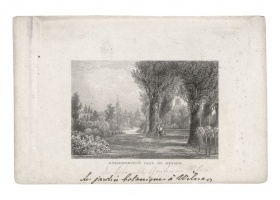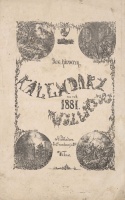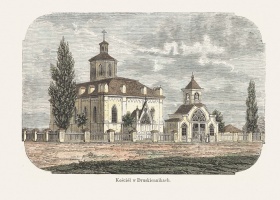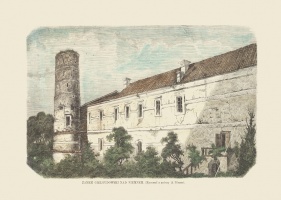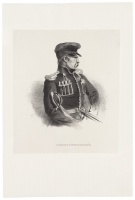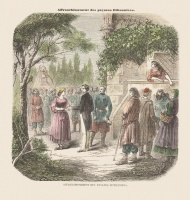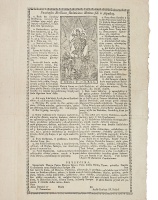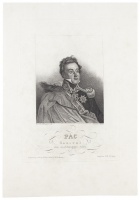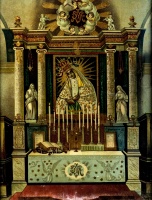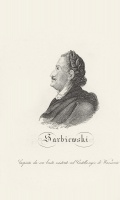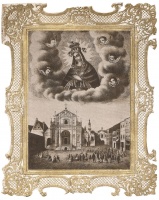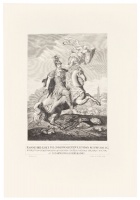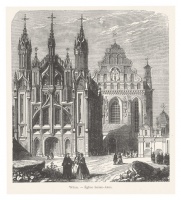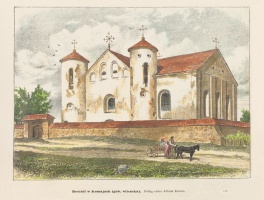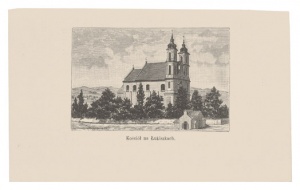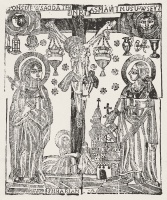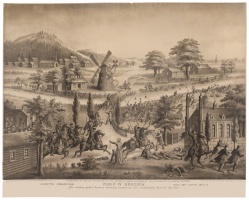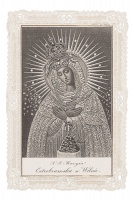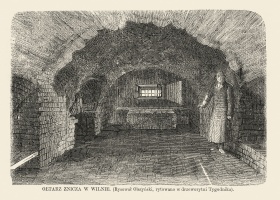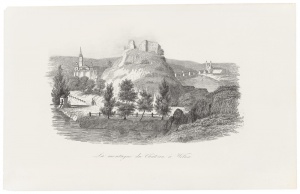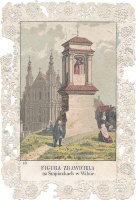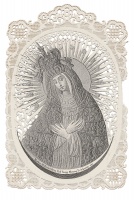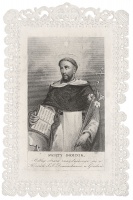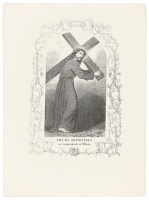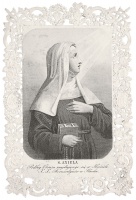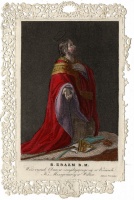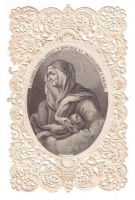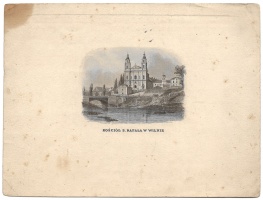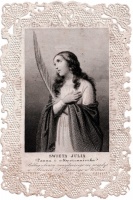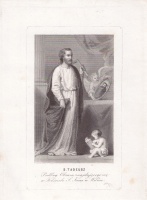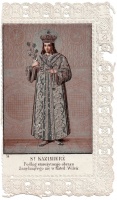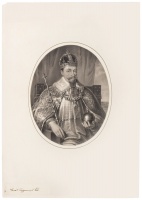
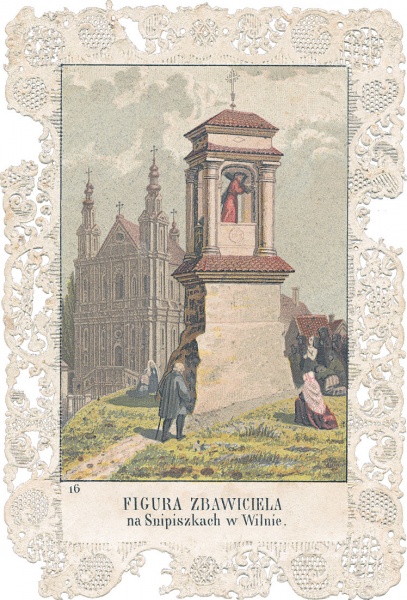

The roadside shrine in Šnipiškės with the sculpture ‘Christ carrying the cross’
| Author: |
Unknown artist |
| Created: | ca 1850–1860 |
| Material: | paper |
| Technique: | chromolithograph |
| Dimensions: | 10.50 × 7.10 cm |
| Signature: | inscription: 16 / FIGURA ZBAWICIELA na Snipiszkach w Wilnie. |
Jan Kazimierz Wilczyński, ‘Album of Vilnius’, series V, No. 16.
Wilczyński included in the ‘Album of Vilnius’ the same pictures, but in different sizes and techniques (lithographs, steel and copper engravings). One example is the view of Šnipiškės painted by Jan Chrucki (1810–1885), which was lithographed by the French artists Bichebois and Adam, and a steel engraving was made by the English graphic artist Edward Francis Finden (1791–1857). A large colour lithograph, a simple steel engraving and a small picture kept in a prayer-book are adapted to the needs of people from diff erent social strata and of varying means. The Church of St Raphael in Šnipiškės was closed down by the Imperial Russian authorities as a result of the 1831 uprising, and it was already closed by the time when the prints were being made. There used to be a statue of St John Nepomucen on a hill near the church, but its condition deteriorated, and after the plague of 1710 a shrine was erected with a sculpture of Christ carrying the cross. After 1847, the sculpture was regarded as miracle-working, and crowds of people would come to pray before it. Therefore, Wilczyński included a lithograph portraying the shrine and the figure of Christ the Redeemer in a series of small religious pictures. The shrine was pulled down in the 1960s, when the street was being widened.
Text author Laima Laučkaitė
A two-storey brick roadside shrine with the sculpture Christ carrying the cross stood until 1950 in the suburb of Šnipiškės opposite the Church of St Raphael. This monument, on a small hill by the bridge, is believed to have been built in 1720 on the burial site of victims of war or plague, by Jesuits from the Church of St Raphael, who placed the sculpture in the shrine. For many years, the shrine was a sign for pilgrims travelling to the Calvary at Verkiai, but it became a site of pilgrimage itself, for the sculpture was famous for working miracles. The shrine was pulled down and the hill was levelled when the street was rearranged in the Soviet period.
Text author Dalia Vasiliūnienė
Source: Law firm Valiunas Ellex art album VILNIUS. TOPOPHILIA II (2015). Compiler and author Laima Laučkaitė, HEAVEN AND BEYOND (2016). Compiler Dalia Vasiliūnienė. Text authors Dalia Vasiliūnienė, Skaidrė UrbonienėExpositions: “Heaven and Beyond. Works of religious art from the collection of Rolandas Valiūnas and the law firm Valiunas Ellex“, 31 May–24 September 2016, Church Heritage Museum, Vilnius (curators Dalia Vasiliūnienė, Skaidrė Urbonienė); "Sacred Vilnius: Pilgrimage from the Gates of Dawn to Kalvarija Way of the Cross", 20 April – 4 July 2021, Vilnius Picture Gallery (Didžioji St. 4, Vilnius). Curators: Rasa Adomaitienė, Rūta Janonienė, Sigita Maslauskaitė-Mažylienė.







